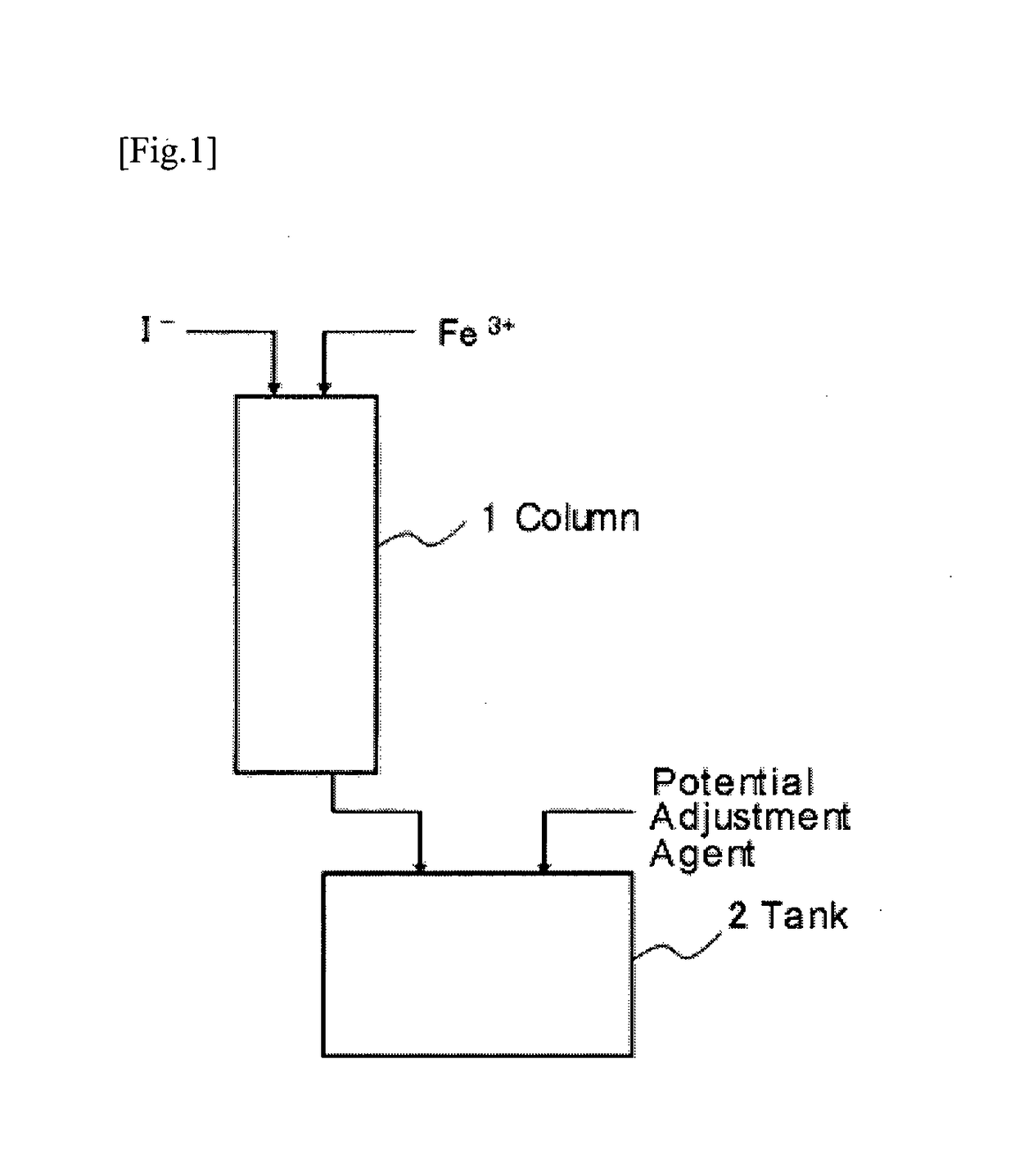Method of leaching copper from copper sulfide ore and method of evaluating iodine loss content of column leaching test of the copper sulfide ore
a technology of copper sulfide ore and leaching test, which is applied in the direction of process efficiency improvement, iron compounds, chemistry apparatus and processes, etc., can solve the problems of low yield of copper leaching, low efficiency, and inconvenient methods, so as to improve the recovery rate of iodine, reduce the loss of iodine volatilization, and improve the overall process efficiency
- Summary
- Abstract
- Description
- Claims
- Application Information
AI Technical Summary
Benefits of technology
Problems solved by technology
Method used
Image
Examples
example 1
[0051]As a copper ore for a target, a crude ore mined in Chile was used. Total copper content was 0.43%. Copper ore composition, estimated by Sequential Assay, was found to be 5% copper oxide ore, 45% secondary copper sulfide ore, and 50% primary copper sulfide ore.
[0052]The Sequential Assay herein is a method of eluting copper ores in the ore according to procedures below, and calculating the contents of copper oxide ore, secondary copper sulfide ore and primary copper sulfide ore based on assay data of the eluates. The analysis was outsourced to a testing and consulting facility, SGS Lakefield Research Limited Chile S.A.
(1) Copper oxide ore: a sample crushed to a certain grain size was added with sulfuric acid, and the mixture was stirred for a certain period. Dissolved copper was quantified.
(2) Secondary copper sulfide ore: a solid fraction obtained by solid-liquid separation in the assay of the copper oxide ore was added with sodium cyanide solution, and the mixture was stirred ...
example 2
[0063]5 L of simulated leaching solution including conditions of iodine concentration of 100 mg / L, total iron concentration of 5 g / L, and pH of 1.8 was stored in a fluorine processed large bottle having a storage capacity of 20 L and allowed to stand for one week in a sealed condition at standard temperature. The potential of the simulated leaching solution was changed in a range of 430 mV and 540 mV (silver—silver chloride electrode reference) by the addition of the iron (II) ions while the solution was stored. Iron sulfate was used as the source of iron (II) ions.
example 3
[0064]5 L of simulated leaching solution including conditions of iodine concentration of 100 mg / L, iron (III) concentration of 5 g / L, and pH of 1.8 was stored in a fluorine processed large bottle having a storage capacity of 20 L and allowed to stand for one week in a sealed condition at standard temperature. The potential of the simulated leaching solution was changed in a range of 410 mV and 540 mV (silver—silver chloride electrode reference) by the addition of the sulfurous acid solution while the solution was stored. When the sulfurous acid solution was added to the simulated leaching solution, sulfuric acid is generated by oxidation-reduction reaction of the iron (III) ions and the sulfurous acid solution and pH of the solution is lowered. Thus, sodium hydroxide was added to the simulated leaching solution to re-adjust pH at 1.8.
[0065]The iron concentrations in Examples 2 and 3 were measured by using an ICP emission spectrophotometric analyzer (ICP-AES), and the iodine concentr...
PUM
| Property | Measurement | Unit |
|---|---|---|
| Percent by mass | aaaaa | aaaaa |
| Electric potential / voltage | aaaaa | aaaaa |
| Concentration | aaaaa | aaaaa |
Abstract
Description
Claims
Application Information
 Login to View More
Login to View More - R&D
- Intellectual Property
- Life Sciences
- Materials
- Tech Scout
- Unparalleled Data Quality
- Higher Quality Content
- 60% Fewer Hallucinations
Browse by: Latest US Patents, China's latest patents, Technical Efficacy Thesaurus, Application Domain, Technology Topic, Popular Technical Reports.
© 2025 PatSnap. All rights reserved.Legal|Privacy policy|Modern Slavery Act Transparency Statement|Sitemap|About US| Contact US: help@patsnap.com



